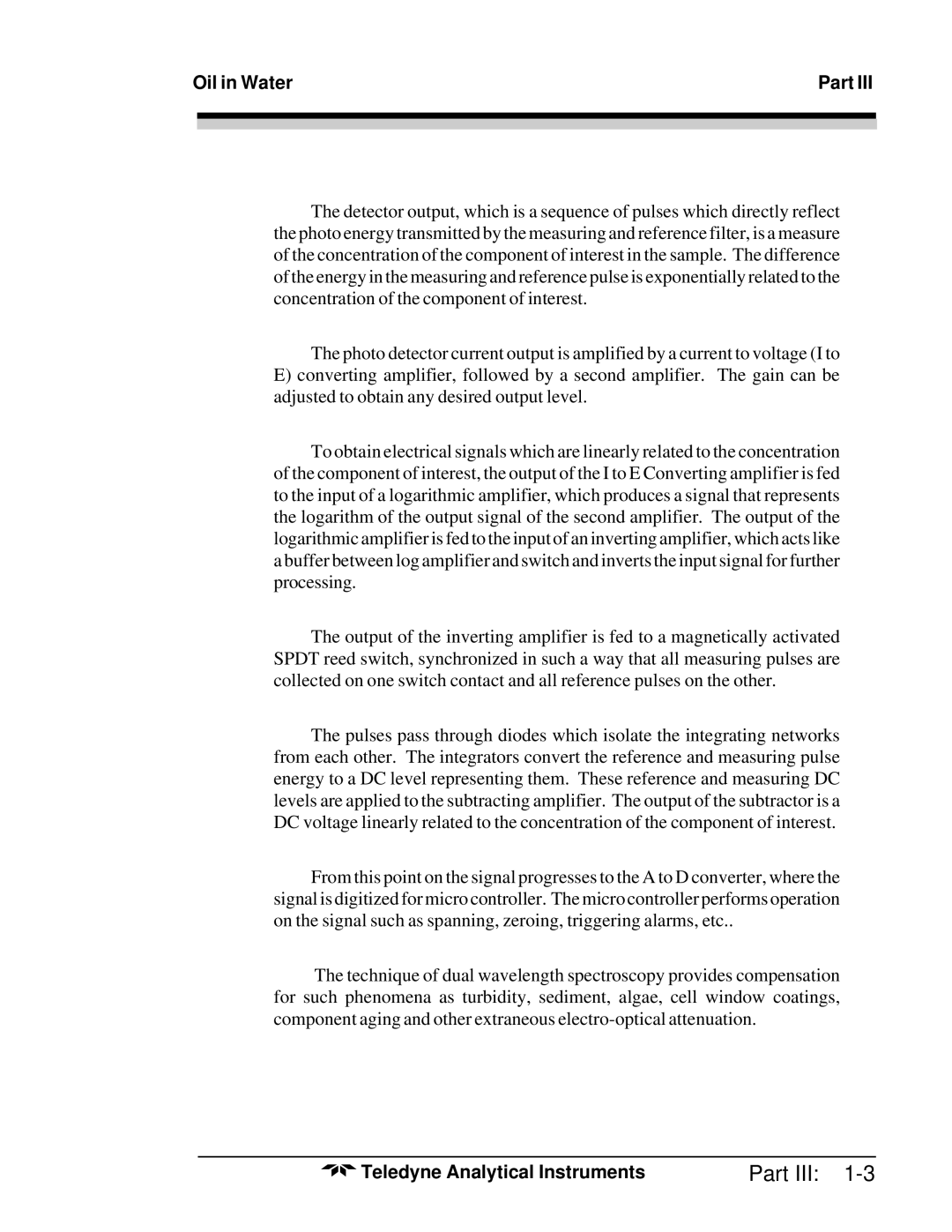Oil in Water | Part III | |
|
|
|
|
|
|
|
|
|
The detector output, which is a sequence of pulses which directly reflect the photo energy transmitted by the measuring and reference filter, is a measure of the concentration of the component of interest in the sample. The difference of the energy in the measuring and reference pulse is exponentially related to the concentration of the component of interest.
The photo detector current output is amplified by a current to voltage (I to
E)converting amplifier, followed by a second amplifier. The gain can be adjusted to obtain any desired output level.
To obtain electrical signals which are linearly related to the concentration of the component of interest, the output of the I to E Converting amplifier is fed to the input of a logarithmic amplifier, which produces a signal that represents the logarithm of the output signal of the second amplifier. The output of the logarithmic amplifier is fed to the input of an inverting amplifier, which acts like a buffer between log amplifier and switch and inverts the input signal for further processing.
The output of the inverting amplifier is fed to a magnetically activated SPDT reed switch, synchronized in such a way that all measuring pulses are collected on one switch contact and all reference pulses on the other.
The pulses pass through diodes which isolate the integrating networks from each other. The integrators convert the reference and measuring pulse energy to a DC level representing them. These reference and measuring DC levels are applied to the subtracting amplifier. The output of the subtractor is a DC voltage linearly related to the concentration of the component of interest.
From this point on the signal progresses to the A to D converter, where the signal is digitized for micro controller. The micro controller performs operation on the signal such as spanning, zeroing, triggering alarms, etc..
The technique of dual wavelength spectroscopy provides compensation for such phenomena as turbidity, sediment, algae, cell window coatings, component aging and other extraneous
Teledyne Analytical Instruments | Part III: |
